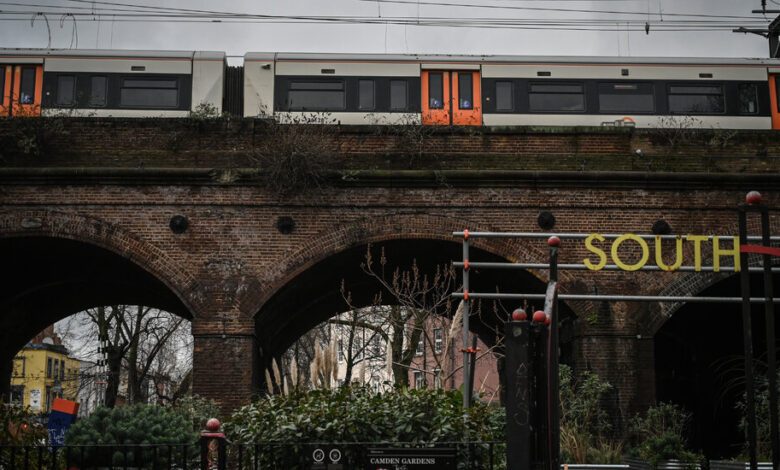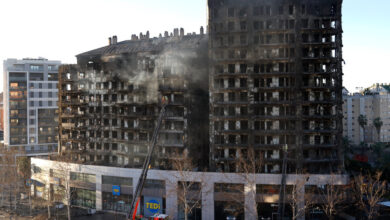
[ad_1]
London’s public transportation system may soon become a bit easier to navigate.
The train lines on London’s Overground, a rail system that largely serves people in neighborhoods outside of central London beyond the reach of the city’s Underground system, will be renamed.
The lines on the map will also receive new colors, replacing a system that is currently marked entirely with orange lines on maps.
While the Overground is technically a different system than the Underground, popularly known as the tube, the same payment method applies to both, and multiple stations connect the two systems.
The new names are: Lioness, named after the English women’s soccer team; Mildmay, honoring a small East London hospital with a pivotal role caring for patients during the AIDS crisis; Windrush, after the ship that brought some of the first migrants from the Caribbean to Britain; Weaver, which travels through an area once known for its textile trade; Suffragette, after the movement that fought for women’s right to vote; and Liberty, which references the historical independence of the people of the Havering borough.
The new names and maps will go into effect later this year. The project will cost about 6.3 million pounds (roughly $7.9 million), according to Transport for London, the city’s transportation authority.
The majority of that cost will be used to update signs and references within the system, including redesigned maps in the 113 Overground stations and in Underground stations where the maps are displayed, as well as digital screens and re-recordings of the public address systems.
The names and colors should make it easier for riders to navigate the system, Transport for London, the city’s transportation authority, said in a statement.
Susan Hall, the Conservative mayoral candidate in London’s May election, voiced a common right-wing sentiment on the rebrand, telling The Daily Mail it was “virtue signaling nonsense.” But some riders said they welcomed the change. Lucia Florin, who uses the Overground to commute, said the new names would give the system more personality.
“I just don’t think people really know the names of the Overground,” she said on Thursday at the London Fields station in East London.
Currently, the different lines are referred to by their destinations, according to the Transport for London’s style guide: “All directional references should be referred to as the destination they are traveling towards.”
To get to work, Ms. Florin rides what will soon be called the Weaver line, which is something that resonates with her daily commute. “I work in fashion,” Ms. Florin said. “Maybe I will remember that.”
Hundreds of thousands of people use the Overground daily. Arriva Rail, the company that manages the system on behalf of Transport for London, runs almost 1,600 services on 111 trains every day, carrying more than 520,000 passengers, according to its website.
The system pales in comparison with London’s tube system, which transports up to 5 million passengers a day, according to Transport for London.
The London Overground opened in 2007 “to provide better connections between areas outside of central London” when Transport for London took over four suburban railway lines. Since then, the network has grown, resulting in a system “represented by a spaghetti of orange on the Tube maps,” according to the transit agency.
“It’s overdue,” said Oliver Carden, standing outside the London Fields station on Thursday. He said that for Londoners, the current system may make sense, but that visitors would benefit from the new names and colors. He said he also appreciated that the names reflected the city’s history and heritage, rather than establishment figures: “Making it reflect more cultural heritage is way better than just naming it after the Queen,” Mr. Carden said.
Growing up in London, Mr. Carden said that he and his friends called the system “The Ginger Line,” because of its orange color on the map.
Source link




